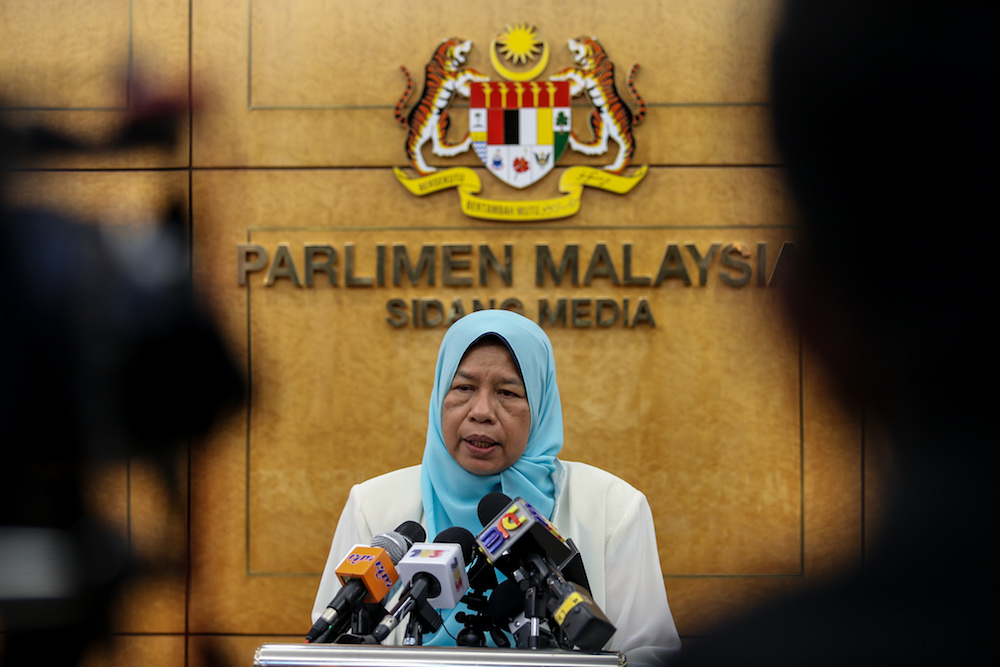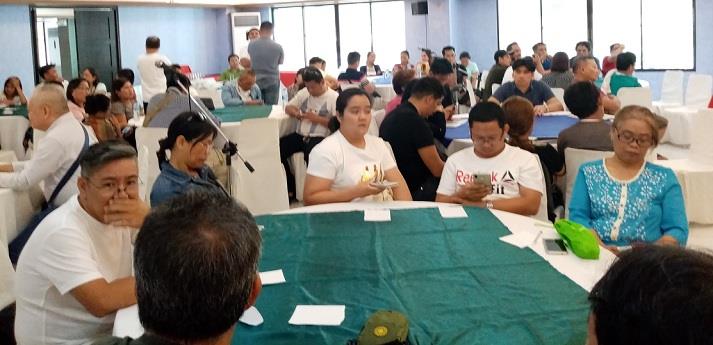KUALA LUMPUR, April 22 — Housing and Local Government Minister Zuraida Kamaruddin has big plans to change the country’s waste management industry during her first term in office.
Her idea, which was first mooted in Dewan Rakyat on April 2, will see a centralised waste park handling plastic waste recycling projects. Any plastic waste factories outside the boundaries of the park will be deemed illegal.
In an exclusive interview with Malay Mail recently, Zuraida elaborated on her proposal, saying that the waste park will also include scrap metal recycling, particularly from irreparably damaged vehicles.
“The ministry gives licences to the import of clean plastics. This is where the clean plastic comes in, we recycle and export back as resins and pallets. This will be turned into consumer products — Nike T-shirts and all those — and it’s worth RM30 billion.
“So, what will we do to make sure we capitalise on this industry which we ride on to bring income into the country? In two years, I’m going to centralise all these factories into one designated area — waste parks.
“Then it will be easier for us to monitor and manage. Anything outside this waste park will be illegal. So now they have to start thinking, correct themselves if they are illegal, and start applying for legal licences,” said Zuraida.
She said that all state governments have been notified of the ministry’s plans.
By the end of this parliamentary term, almost every state will have its own waste park.
Acknowledging the logistical challenges, however, she foresees some states such as Selangor and Johor requiring two parks, while small states or those that do not produce as much plastic may share one with their neighbour.
The parks will focus on upcycling waste products and turning garbage into money. She expects the first waste park to begin operations in two years’ time.
“Selangor, Kedah, Penang, Perak and Johor have a lot of plastics. These are the five states that must have a waste park (or share one). The other states I must consider if there is a need or not,” she said.
Talks are already taking place on the construction of waste parks in those states. The three northern-most states in West Malaysia — Kedah, Perlis and Penang — might share a waste park located in Kulim.
Selangor will probably see a waste park in Port Klang while Johor will have one in Rapid Pengerang. The Perak state government is still in the process of identifying a suitable site.
Similar to waste parks, Zuraida also plans to introduce a waste-to-energy (WTE) policy and construct an incinerator in each state.
“At one time, people were against incinerators. I understand that because in the past, the technology was not developed and we couldn’t explore fully to find the best technology then.
“But now the technology for WTE is advanced, more generic now, and we don’t have to worry about going into the technology. So, in two years’ time, I hope to have one WTE in each state,” said Zuraida.
Another innovation that the minister plans to introduce is smaller scale food-waste processing facilities that will be located near residential areas and food courts.
Such facilities will be tasked with recycling food and garden waste into compost and gas.
“The other day I launched it in Kedah — Laman Komuniti Lestari — where they recycle food and garden waste. The compost can be sold and some of it can be turned into gas, which we can also sell, and the community can take part.
“So that’s also part of the programmes under the National Community Policy,” she said.
The minister expects restaurants and residential areas to send their food waste to these centres for recycling.
She explained that this will also have the added effect of reducing pests such as rats and cockroaches as their food source will be cut.
This will also result in a more hygienic and healthier society, observed Zuraida.
She also plans to take a tough stance against illegal dumpers by installing CCTV cameras in hotspots under her local government portfolio to catch large-scale litterbugs red-handed.
The pilot project will take place in Zuraida’s own constituency of Ampang.
“I want to nab people who litter or carry out illegal dumping. Apart from crime, I want to deter vandalism too,” she said.
Taking a page out of her colleague Energy, Technology, Science, Climate Change and Environment Minister Yeo Bee Yin’s book, Zuraida will also be replacing the current lighting system in local government buildings with LED lighting.
“I’m going to get LED lighting installed in local government buildings. Local governments spend about RM177 million on electricity bills a month nationwide.
“If we use LED, we should be able to save 50 per cent on electricity costs. These savings can be used for other things,” she said, adding that the pilot project will also be conducted in her constituency of Ampang.






